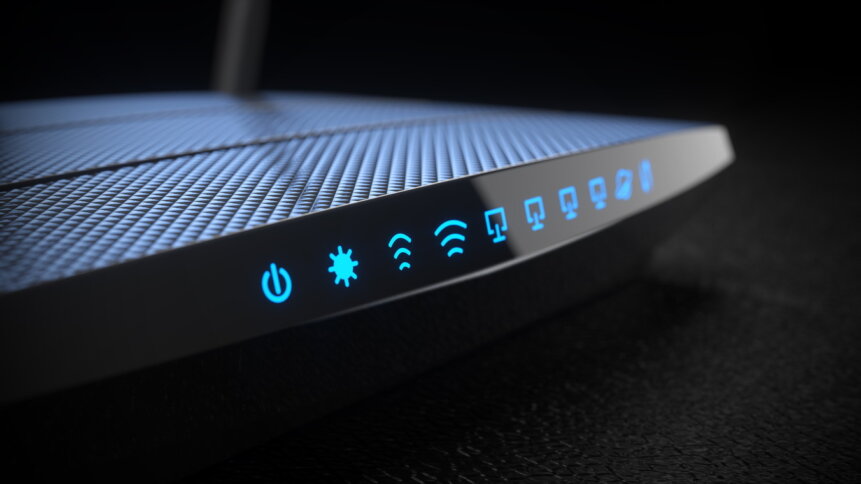What’s the role of a router in a computer network?

When people try to understand the role of a router in a computer network, they often get close to the truth, and then misunderstand it entirely. More often than not, they confuse a router with a modem, and while it’s easy to see why they would do that, the two things are quite separate.
The grocery analogy.
So let’s clear things up with a three-dimensional analogy, and then a couple of more technical definitions, so we’re all on the same page.
Imagine you live in a third-floor apartment, and you have three roommates.
All four of you separately order groceries online.
The supermarket sends a delivery truck to your address, with all the groceries for the four of you. It reaches the apartment building, but then all it can do it sit there. It’s at the right place, it’s done its job. But it’s not much use to you – or your roommates – while all it can do it sit there.
The delivery truck in this analogy is your modem.
The groceries represent the internet, and all the weird, wonderful, and downright freaky things you can do with it.
Your modem delivers internet connectivity to your address (in this case, your IP address) – but not to your machine. Or your roommates’ machines, either.
The missing piece of the puzzle is the delivery person, who gets the groceries (the internet) from the truck (the modem), and delivers them to each individual address (machine), sorting out which data groceries have been requested by which roommate’s machine.
The delivery person is your router – connecting any and all individual machines, via the medium of the modem, to the wonders of the internet.
Clear?
Of codes and networks.
Now let’s add a little techno-flesh to that admittedly slightly tortuous grocery analogy.
The internet is a network of sites and locations, all coded to present in a certain way. Your modem takes signals from our Internet Service Provider (ISP) and translates them into code your devices can understand, so that, once you connect to it, you see the world’s websites the same way their creators coded them to look.
The router is what connects your various devices to the modem, so that all that translated code is ready to appear on your particular screen – and the screens of all your colleagues and/or staff – at the typing of a web address.
But a router can do more than that. Whereas a modem has just one job to do – translating the internet into code your devices can understand, and also translating your devices’ commands and requests into code the internet can understand – a router need not get involved in such highfalutin’ communication if you don’t want it to.
If you only need the devices in a single work network to communicate among themselves, you can set up your office with just a Local Area Network (LAN) – a network that only connects devices on the same IP address – like all our roommates in the third-floor apartment.
There are, in the 2020s, fewer and fewer occasions when any home or office would only need a LAN connection, but it’s an option that routers can give you. So if we’re looking at the role of a router in a computer network, it can be either to connect all the devices on a single IP address (vertically, so to speak) to a modem, and from there out into the wilds of the internet, or to connect all the devices on a single IP address together (horizontally, by comparison), or – and this is more or less the norm in the 2020s, both, by using different LAN and Wide Area Network (WAN – code for the internet) connections.
Different routers for different needs.
While the fundamental role of a router in a computer network is the same from one router to another – they direct network data (vertically or horizontally, as discussed), using “packets” to contain different types of data from instructions to files, determining where the data needs to go and getting it there – it’s also important to understand that there are different types of router, and the different types will approach the same task in different ways.
Understanding that might well allow you, for instance, to pick a router that’s most appropriate, useful or convenient for your particular type of business.
Core routers are exactly what they sound like – providers of the largest amount of bandwidth, to give you maximum connectivity, and even allow you to attach other routers or switches to extend the number of devices that can use them.
These tend to be used only by larger enterprises, with staff working in different buildings or locations. They are, for instance, used in some of the big cloud service providers like Microsoft, Google, and Amazon.
Edge routers are designed to connect to other routers, so as to get data to its end users. Not usually available with wifi, they’re a kind of outlier, existing usually at the outermost edge of a system’s connectivity – hence the connection to other routers. With the ever-greater use of web connections and the cloud, edge routers are, if not exactly dying out, then at least increasingly specialized in their uses.
Similarly, distribution routers take data from edge routers – usually via ethernet connection because of the unlikelihood of edge routers having wifi connectivity – and then distribute it. Frequently, distribution routers will have wifi, so they more or less take the securely communicated data from edge routers and broadcast it on via wireless connection.
Modern routers.
Wireless routers are increasingly popular in the 2020s as more and more homes and workplaces go ethernet-free. They essentially work as a combination edge and distribution router (another reason that the two separate devices are less popular than they were in the past). Fairly standard equipment in most home and business deployments these days, they are deemed “good enough” to get the job done by most people. If you have a need for particular functionality though, you can always consider upgrading to a business-spec router that gives you better traffic management options, like multiple bands, and stronger security.
And virtual routers are possibly the most unusual routers developed to date – routers composed entirely of software, held in the cloud, and usually leased to businesses as a service model.
While there’s no doubt that a virtual router is cool, the specifications of what they can do are aimed – and therefore also priced – at larger businesses with fairly complex networking needs. You’ll know if that’s you because your list of non-negotiables will be significantly longer than those of most companies. If you don’t have the list, you probably don’t need to pay for a virtual router.
The role of a router in a computer network is essentially the same across the board – they manage and “route” data packets to wherever they’re configured to send them, whether that be to a point on a local network, or to a modem and into the web. But the ways in which they do the job vary significantly depending on the type of router you choose.
Assess what you actually need your router’s role in your network to be, and you should be able to pick up the kind of router that’s best for your business more or less instinctively.










